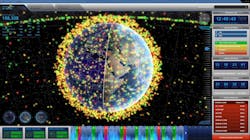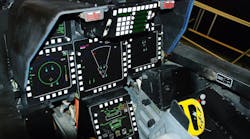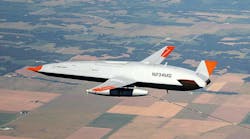WASHINGTON, 30 July 2012. Engineers at both Lockheed Martin in Bethesda, Md., and Raytheon in Colorado Springs, Colo., have completed the latest phase, the preliminary design review, of the U.S. Air ForceSpace Fence program, designed to advance space situational awareness (SSA). Two teams, one lead by Raytheon and one by Lockheed Martin, each won an 18-month, $107 million contract awarded by the Air Force in Jan. 2011.
The next phase of Space Fence procurement is system development, with Air Force officials naming the first Space Fence radar site. System Development is expected in Fall 2012, and will be followed by the deployment and follow-on support phases. The first Space Fence site is expected to reach initial operational capability in 2017.
The Space Fence, operating in the S-band frequency range, is intended to replace the aging Air Force Space Surveillance System (AFSSS). AFSSS, installed in 1961, is a multistatic radar system that detects orbital objects passing over the U.S. and a component of the U.S. space surveillance network.
Space Fence is capable of detecting small objects in low earth orbit to provide accurate details to meet warfighter space situational awareness requirements.
“The successful detection and tracking of resident space objects are important steps in demonstrating technology maturity, cost certainty and low program risk,” explains Steve Bruce, vice president of the Space Fence program at Lockheed Martin’s Mission Systems & Sensors business. “Space Fence will detect, track, and catalog over 200,000 orbiting objects and help transform space situational awareness from being reactive to predictive. The Air Force will have more time to anticipate events potentially impacting space assets and missions.”
Space Fence multiphase acquisition program will lend to the delivery, installation, operation, and support of up to two, globally positioned, S-band radars operating in the U.S. Space Surveillance Network. This is the second contract both Raytheon and Lockheed Martin engineers have completed under the Air Force’s Space Fence program.
The Lockheed Martin-led team includes General Dynamics, AMEC, and AT&T. Raytheon executives have not revealed the company’s partners on the Space Fence project.
Air Force officials are expected to announce a request for proposal (RFP) for the final down-select between the remaining competitors for the Space Fence contract.



